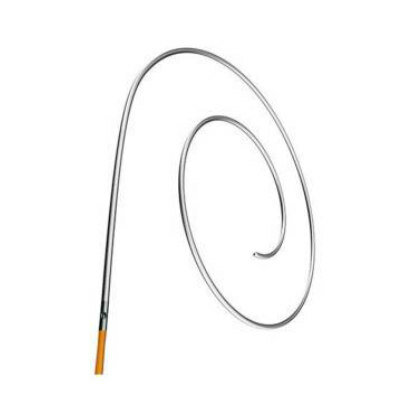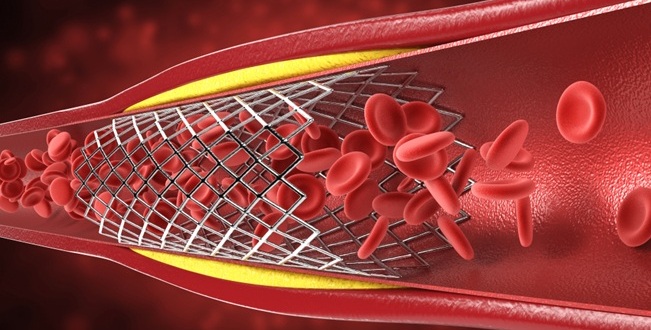HPV Positive Throat Cancer Patients Need Less Neck Surgery
|
By HospiMedica International staff writers Posted on 29 Sep 2014 |
Patients with oropharyngeal cancer (OPC) resulting from human papillomavirus (HPV) show significantly higher rates of complete response on a post-radiation neck dissection, according to a new study.
Researchers at the Fox Chase Cancer Center (FCCC; Philadelphia, PA, USA) reviewed the medical records of 396 patients whose oropharyngeal tumors had spread to at least one lymph node. Within 180 days of completing radiation therapy, 146 of the patients underwent neck surgery to remove persistent lumps in their neck; of these, 99 patients had records that indicated whether or not their tumors had likely been triggered by HPV.
The researchers found that patients with HPV often responded better to treatment for OPC than those without. The same trend suggested that those that tested positive for HPV—measured by the presence of a protein called p16—were less likely to have a recurrence of their cancers, regardless of whether or not the tumors had completely disappeared following treatment. Patients’ HPV status was also the strongest predictor of whether or not they were alive at the end of the study. The study was presented at the American Society for Radiation Oncology (ASRO) annual meeting, held during September 2014 in Chicago (IL, USA).
“Among the patients who underwent neck surgery, any lingering bumps were more likely to be benign if patients were infected with HPV,” said lead author and study presenter Thomas Galloway, MD, director of clinical research at FCCC. “For patients that achieve a complete response, neck surgery is probably unnecessary. The bump might have become a permanent scar, or in some cases, it would have eventually disappeared.”
HPV oral infection precedes the development of the related OPC. Slight injury to the mucous membrane serves as an entry gate for HPV, which thus works into the basal layer of the epithelium. An earlier prospective study found that increased HPV+ OPC risk was observed more than 15 years after HPV exposure, pointing to a slow development of the disease, much like cervical cancer.
Related Links:
Fox Chase Cancer Center
Researchers at the Fox Chase Cancer Center (FCCC; Philadelphia, PA, USA) reviewed the medical records of 396 patients whose oropharyngeal tumors had spread to at least one lymph node. Within 180 days of completing radiation therapy, 146 of the patients underwent neck surgery to remove persistent lumps in their neck; of these, 99 patients had records that indicated whether or not their tumors had likely been triggered by HPV.
The researchers found that patients with HPV often responded better to treatment for OPC than those without. The same trend suggested that those that tested positive for HPV—measured by the presence of a protein called p16—were less likely to have a recurrence of their cancers, regardless of whether or not the tumors had completely disappeared following treatment. Patients’ HPV status was also the strongest predictor of whether or not they were alive at the end of the study. The study was presented at the American Society for Radiation Oncology (ASRO) annual meeting, held during September 2014 in Chicago (IL, USA).
“Among the patients who underwent neck surgery, any lingering bumps were more likely to be benign if patients were infected with HPV,” said lead author and study presenter Thomas Galloway, MD, director of clinical research at FCCC. “For patients that achieve a complete response, neck surgery is probably unnecessary. The bump might have become a permanent scar, or in some cases, it would have eventually disappeared.”
HPV oral infection precedes the development of the related OPC. Slight injury to the mucous membrane serves as an entry gate for HPV, which thus works into the basal layer of the epithelium. An earlier prospective study found that increased HPV+ OPC risk was observed more than 15 years after HPV exposure, pointing to a slow development of the disease, much like cervical cancer.
Related Links:
Fox Chase Cancer Center
Latest Surgical Techniques News
- Ablation Reduces Stroke Risk Associated with Atrial Fibrillation
- Optical Tracking Method Identifies Target Areas in Robot-Assisted Neurosurgery
- General Anesthesia Improves Post-Surgery Outcomes for Acute Stroke Patients
- Drug-Coated Balloons Can Replace Stents Even in Larger Coronary Arteries
- Magnetic Kidney Stone Retrieval Device Outperforms Ureteroscopic Laser Lithotripsy
- Absorbable Skull Device Could Replace Traditional Metal Implants Used After Brain Surgery
- Magic Silicone Liquid Powered Robots Perform MIS in Narrow Cavities
- 'Lab-on-a-Scalpel' Provides Real-Time Surgical Insights for POC Diagnostics in OR
- Biodegradable Brain Implant Prevents Glioblastoma Recurrence
- Tiny 3D Printer Reconstructs Tissues During Vocal Cord Surgery
- Minimally Invasive Procedure for Aortic Valve Disease Has Similar Outcomes as Surgery
- Safer Hip Implant Design Prevents Early Femoral Fractures
- New Nanomaterial Improves Laser Lithotripsy for Removing Kidney Stones
- Ultraflexible Neurovascular Microcatheter Delivers Therapies to Tiniest Blood Vessels

- Magnetic Soft Robotic Valve Provides Minimally Invasive Intervention for Acid Reflux
- Wireless Metamaterial Spinal Implants Can Feel, Heal and Communicate
Channels
Critical Care
view channel
Earlier Blood Transfusion Could Reduce Heart Failure and Arrhythmia in Heart Disease Patients
Blood loss during or after surgery can place significant stress on people with heart disease, increasing the risk of dangerous complications. Transfusions are often delayed until hemoglobin levels fall... Read more
'Smart' Shirt Detects Epileptic Seizures in Real Time
Epilepsy affects roughly one in every 100 people worldwide, causing seizures that can range from subtle episodes to severe convulsions and loss of consciousness. These events arise from excessive electrical... Read morePatient Care
view channel
Revolutionary Automatic IV-Line Flushing Device to Enhance Infusion Care
More than 80% of in-hospital patients receive intravenous (IV) therapy. Every dose of IV medicine delivered in a small volume (<250 mL) infusion bag should be followed by subsequent flushing to ensure... Read more
VR Training Tool Combats Contamination of Portable Medical Equipment
Healthcare-associated infections (HAIs) impact one in every 31 patients, cause nearly 100,000 deaths each year, and cost USD 28.4 billion in direct medical expenses. Notably, up to 75% of these infections... Read more
Portable Biosensor Platform to Reduce Hospital-Acquired Infections
Approximately 4 million patients in the European Union acquire healthcare-associated infections (HAIs) or nosocomial infections each year, with around 37,000 deaths directly resulting from these infections,... Read moreFirst-Of-Its-Kind Portable Germicidal Light Technology Disinfects High-Touch Clinical Surfaces in Seconds
Reducing healthcare-acquired infections (HAIs) remains a pressing issue within global healthcare systems. In the United States alone, 1.7 million patients contract HAIs annually, leading to approximately... Read moreHealth IT
view channel
Printable Molecule-Selective Nanoparticles Enable Mass Production of Wearable Biosensors
The future of medicine is likely to focus on the personalization of healthcare—understanding exactly what an individual requires and delivering the appropriate combination of nutrients, metabolites, and... Read moreBusiness
view channel
Philips and Masimo Partner to Advance Patient Monitoring Measurement Technologies
Royal Philips (Amsterdam, Netherlands) and Masimo (Irvine, California, USA) have renewed their multi-year strategic collaboration, combining Philips’ expertise in patient monitoring with Masimo’s noninvasive... Read more
B. Braun Acquires Digital Microsurgery Company True Digital Surgery
The high-end microsurgery market in neurosurgery, spine, and ENT is undergoing a significant transformation. Traditional analog microscopes are giving way to digital exoscopes, which provide improved visualization,... Read more
CMEF 2025 to Promote Holistic and High-Quality Development of Medical and Health Industry
The 92nd China International Medical Equipment Fair (CMEF 2025) Autumn Exhibition is scheduled to be held from September 26 to 29 at the China Import and Export Fair Complex (Canton Fair Complex) in Guangzhou.... Read more














